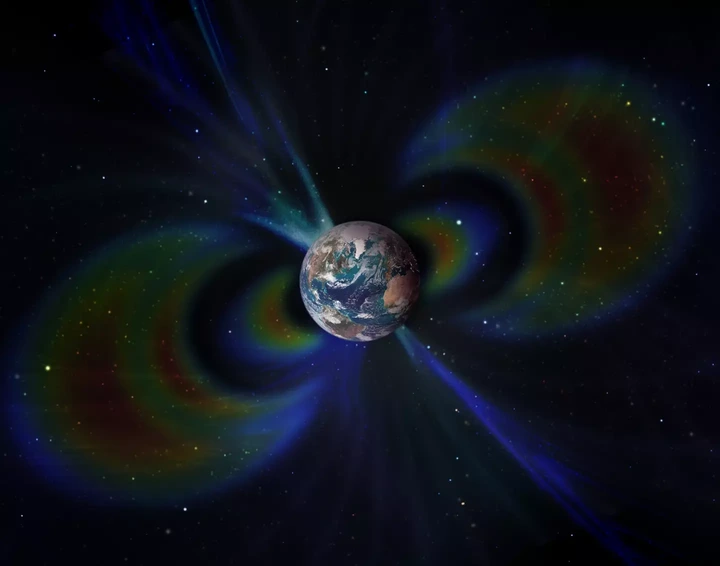Researchers discuss concerning potential consequences of a reversal in Earth's magnetic field, while NASA remains vigilant about a 'dent' in the magnetic shield.
It has the potential to inflict significant harm.

View pictures in App save up to 80% data.
There are countless factors that contribute to Earth's ability to support human life and a vast array of other organisms. However, one crucial element stands out: the planet's magnetic field.
A protective blanket surrounding Earth, it does the business and more when it comes to protecting life from nasty storms heading towards the planet.
Most of that comes from the Sun in the form of solar wind. If we didn't have the magnetic field, we'd suffer a fate similar to what Mars looks like nowadays. Cold, barren, and ultimately all the telltale signs of a planet that used to have life.
It is this magnetic field that has recently got NASA scientists on high alert following the identification of a 'dent' in the protective cover; an area known as the South Atlantic Anomaly (SAA).
At the heart of Earth's magnetic field lie the magnetic poles, located at the northern and southern extremes of the planet. These poles function as pivotal points in a never-ending circuit, allowing invisible magnetic field lines to flow continuously. The video below offers a visual representation of this phenomenon:
What would occur if it were to reverse? Would humanity manage to cope if this event took place while we inhabit the Earth?
This occurrence takes place roughly once every hundred thousand years in the timeline of Earth's development.
Reversing the magnetic field
Since the beginning of Earth as we know it, scientists reckon there has been at least 183 occasions where the planet's magnetic poles have flipped.
The timing of their flipping is completely unpredictable, occurring at intervals ranging from 10,000 years to as long as 50 million years. It's quite a vast range of time!
The most recent magnetic pole reversal occurred 780,000 years ago, an event known as the Brunhes-Matuyama reversal.

View pictures in App save up to 80% data.
Will it turn again in the near future?
The South Atlantic Anomaly has raised concerns that we may be approaching this situation once more.
Initially identified in 1958, the South Atlantic Anomaly (SAA) is a region where the Earth's magnetic field is notably less intense compared to its surrounding areas.
Extending from South America across the southern Atlantic Ocean to Africa, this region covers a vast expanse of the Earth. Essentially, this signifies that this segment of the planet has reduced shielding from cosmic hazards compared to other areas (which also applies to satellites traversing this orbiting zone).
A 2018 study suggests that the next flip is not expected to occur in the near future.
Richard Holme from the University of Liverpool stated, "There have been discussions suggesting that we may soon face a magnetic polar reversal or excursion."
"Nonetheless, our analysis of the last two major excursion events, which occurred around 31,400 and 34,000 years ago, rev